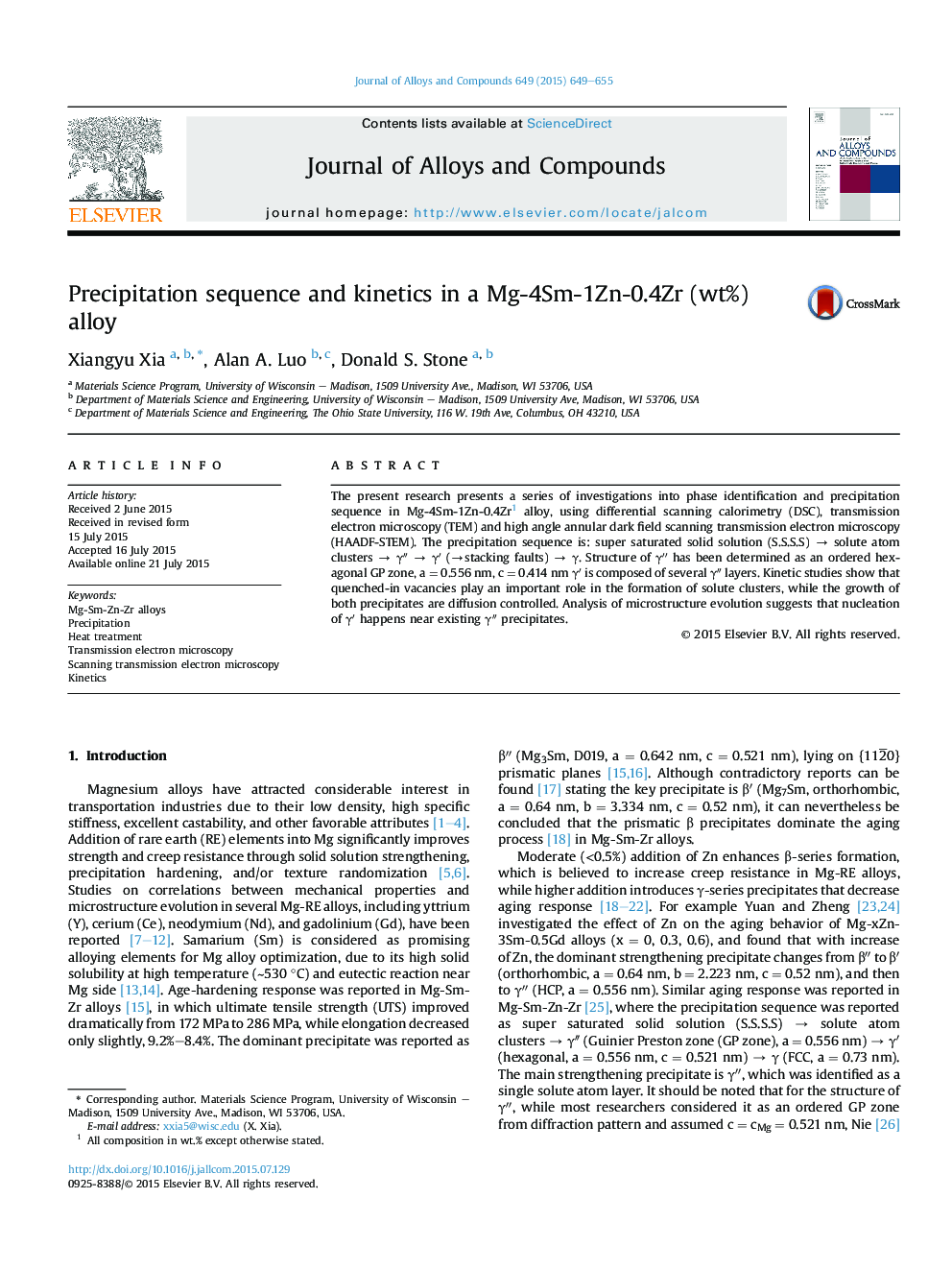| Article ID | Journal | Published Year | Pages | File Type |
|---|---|---|---|---|
| 1608641 | Journal of Alloys and Compounds | 2015 | 7 Pages |
•Precipitation sequence in a high-zinc magnesium-samarium-zinc-zirconium alloy has been identified.•Structures of metastable precipitates are modified directly with HAADF-STEM.•Kinetic calculations were performed to understand nucleation/growth mechanisms of these precipitates.
The present research presents a series of investigations into phase identification and precipitation sequence in Mg-4Sm-1Zn-0.4Zr1 alloy, using differential scanning calorimetry (DSC), transmission electron microscopy (TEM) and high angle annular dark field scanning transmission electron microscopy (HAADF-STEM). The precipitation sequence is: super saturated solid solution (S.S.S.S) → solute atom clusters → γ″ → γ′ (→stacking faults) → γ. Structure of γ″ has been determined as an ordered hexagonal GP zone, a = 0.556 nm, c = 0.414 nm γ′ is composed of several γ″ layers. Kinetic studies show that quenched-in vacancies play an important role in the formation of solute clusters, while the growth of both precipitates are diffusion controlled. Analysis of microstructure evolution suggests that nucleation of γ′ happens near existing γ″ precipitates.
Graphical abstractFigure optionsDownload full-size imageDownload as PowerPoint slide
